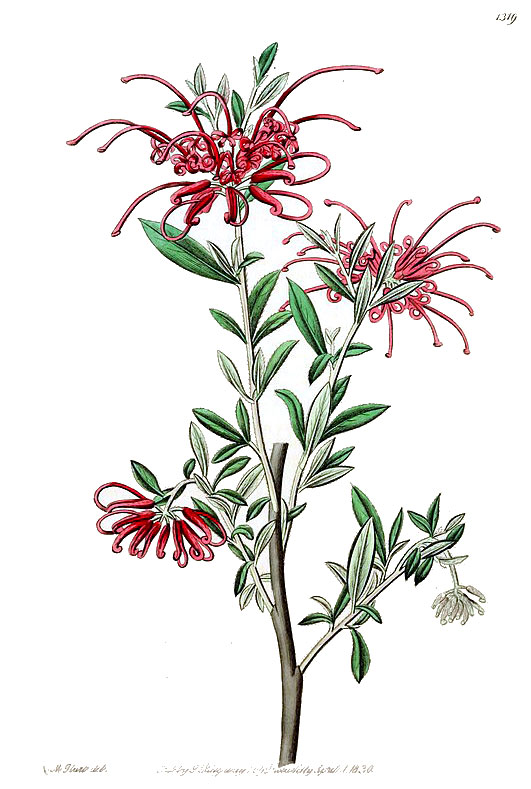Grevillea

Origin: Australasia
Family: Proteaceae
Scientific Name: Grevillea spp.
Folk Names: Silky oak, spider flower, toothbrush plant
Indigenous (Noongar) Names:
– Honeysuckle Grevillea (Grevillea juncifolia): Moncart, paarluc
Magical
Element: Air
Day: Friday
Planet: Venus
Zodiac: Libra
Parts Used: Flowers
Magical Properties: Tranquillity, courage, truth, change, strength, communication, beauty, insight
Substitutions: Blackthorn
Medicinal
Indigenous Medicinal Uses (of various species):
- Moncart bark was burned to use the ash (as is, or chewed) to rub on sores to promote healing.
Warnings
- Grevillea leaves contain resorcinol, a chemical similar to that found in poison ivy and poison oak, which can trigger dermatitis reactions in some people.
- Some species of grevillea flowers contain cyanide.
Practical
Grevilleas are popular garden plants.
Indigenous Uses:
- The nectar (ngonyang) was either sucked from the flowers or soaked in water to make a sweet drink, which was sometimes fermented (gep).
Botanical
The genus of about 360 species is closely related to Hakea.
Type: Evergreen shrubs/trees
Plant size: 0.5-m-35m
Leaves: Range from needle-shaped to fern-like
Flowers: Brightly-coloured, petal-less flowers
Etymology: Named for Charles Francis Greville, a patron of botany and co-founder of the Royal Horticultural Society.
In the Garden
Type: Evergreen shrubs/trees
Light: Bright light
Water: Drought-tolerant
Soil: Well-drained, slightly acidic
Tips:
- Poor drainage or overwatering can lead to root rot.
- Cen be fertilised slightly in early spring if needed. Avoid fertiliser containing phosphorous.
